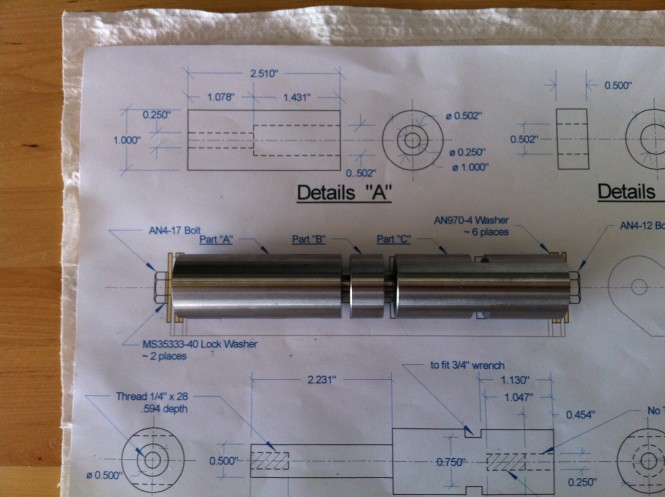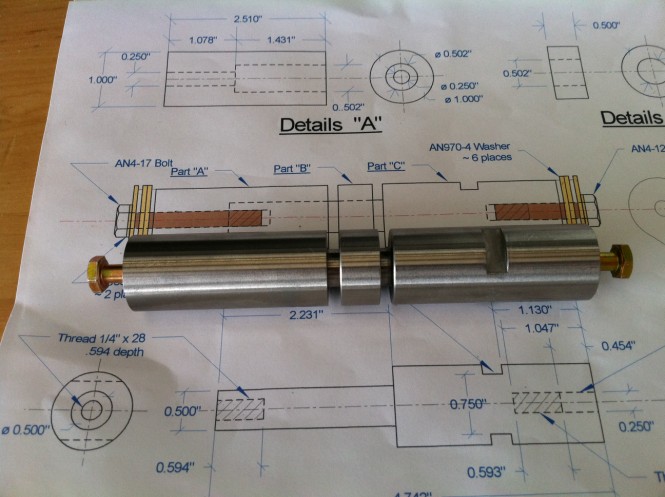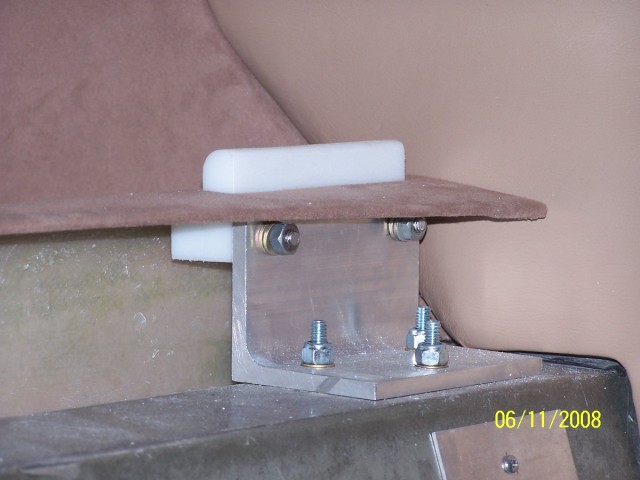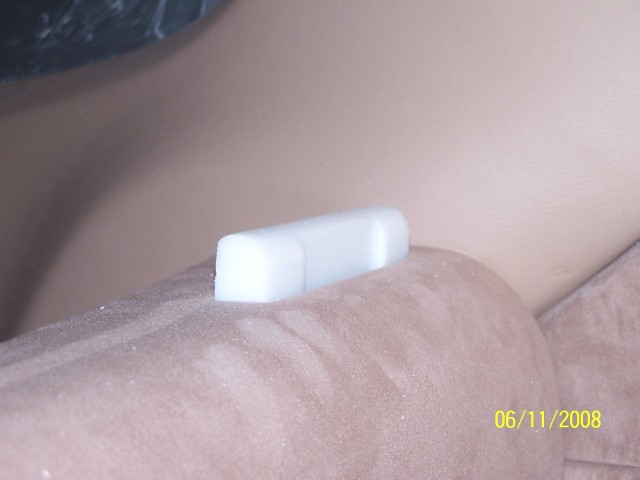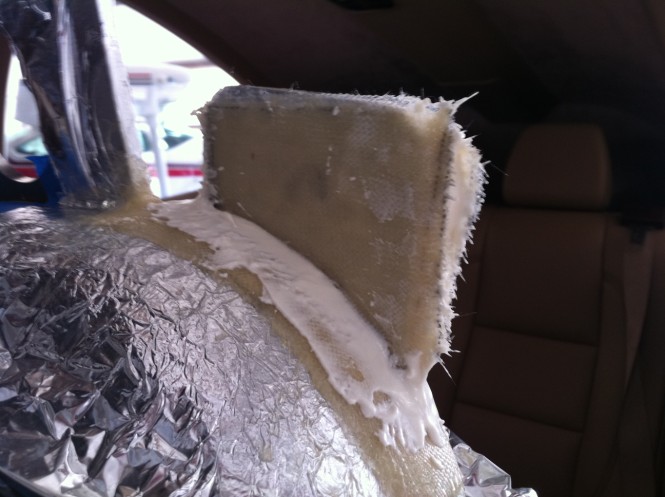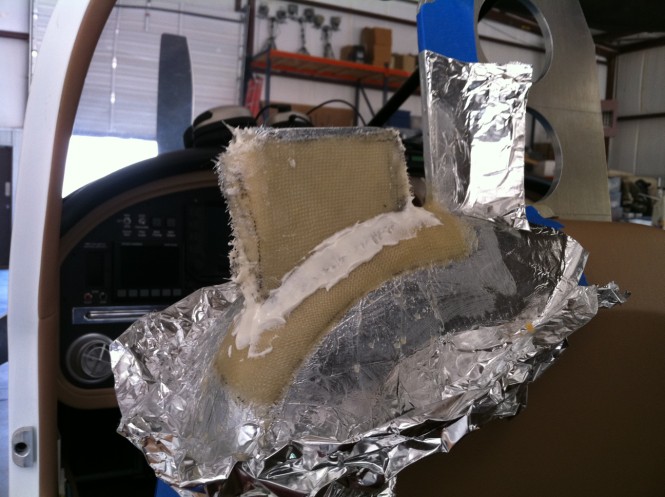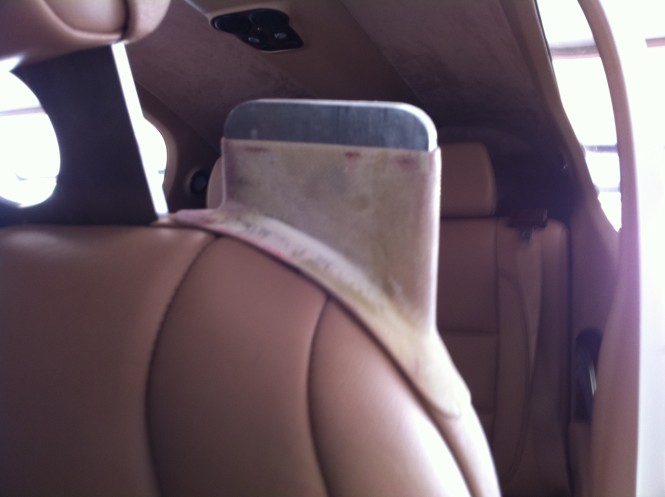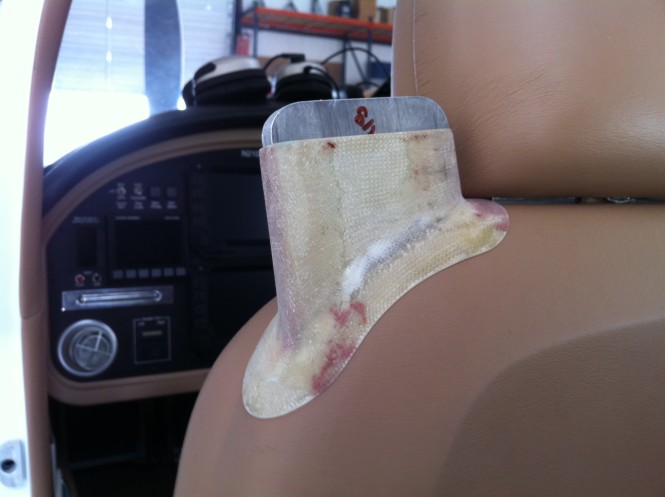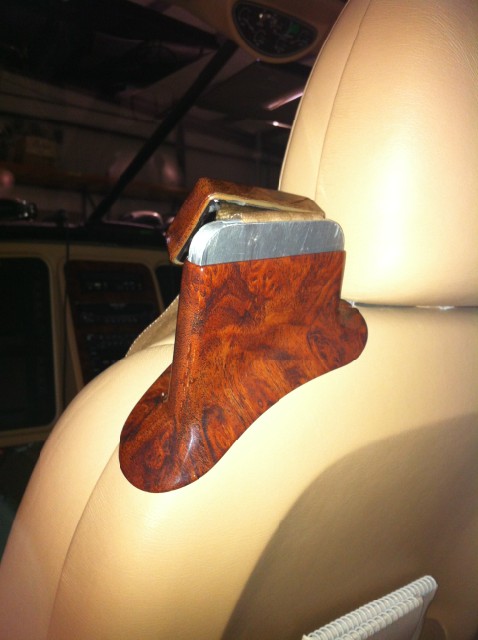|
|
|
|
|
|
||||||||||
|
|
|
|
My seatbelt attachment and arrangements were done for my aircraft only. I am not suggesting to anyone to copy or modify their belts to what I have done. A lot has been mentioned about my shoulder harness installation. Not that it is right, but many older aircraft are out there flying with no shoulder harness installed. I realize the safety the shoulder harness provides to the occupants and wanted shoulder harness's in my aircraft.
I feel the shoulder harness installation on the rear seats is adequate to withstand the force of impact. The nylon guide block's height was raised to insure proper alignment above the top of the rear seat passenger's shoulder. According to the FAA, recommended shoulder harness angle to the body is no more than 5 degrees down or 30 degrees up.
I feel the shoulder harness installation on the rear seats is adequate to withstand the force of impact. The nylon guide block's height was raised to insure proper alignment above the top of the rear seat passenger's shoulder. According to the FAA, recommended shoulder harness angle to the body is no more than 5 degrees down or 30 degrees up.
Rear Seat Lap Belt Attachment Rod
The original rear seat lap belt attachment was inadequate and was redone. This was one of the concerns suggested on many posts. I agree with them and decided to completely redo the attachment method of the rear seat lap belts. The attachment point is in the center of the aft seat equal distance from the original inboard attach point in the plans. A 1" steel rod was machined to install between the original attach points. The seat belt receptors are installed over a 1/2" machined section of the steel rod. A machined steel spacer separates the seat belt receptors. 2 ~ AN970-4 washers install in the gap between the original seat belt attachment on each side. The entire assembly is pulled together by the AN4-17 bolt. This bolt also attaches one end of the machined part to a seat belt attachment. An AN4-12 bolt is used to firmly attach the other end of the machined seatbelt attachment rod to the other existing seat belt attach bracket.
The original rear seat lap belt attachment was inadequate and was redone. This was one of the concerns suggested on many posts. I agree with them and decided to completely redo the attachment method of the rear seat lap belts. The attachment point is in the center of the aft seat equal distance from the original inboard attach point in the plans. A 1" steel rod was machined to install between the original attach points. The seat belt receptors are installed over a 1/2" machined section of the steel rod. A machined steel spacer separates the seat belt receptors. 2 ~ AN970-4 washers install in the gap between the original seat belt attachment on each side. The entire assembly is pulled together by the AN4-17 bolt. This bolt also attaches one end of the machined part to a seat belt attachment. An AN4-12 bolt is used to firmly attach the other end of the machined seatbelt attachment rod to the other existing seat belt attach bracket.
Front Seat Shoulder Harness Attachment
After looking at my options for the shoulder harness, I decided to improve and modify my existing harness attachment. The RV10 is designed for a seatbelt and an overhead shoulder harness attachment. In my research I found to use this set up properly, a crotch strap belt is needed to hold the buckle in place and prevent the occupant from what is known as "submarine" through the seatbelt. The RV10, which is not an aerobatic airplane, does not have a crotch strap attachment for the front seats. It does however have one for the back seats???
The new guide elevates the exit of shoulder harness from the back of the front seat. Researching shoulder harness angles and attachments, the harness should be no lower than 5 degrees below the shoulder blades or 30 degrees above. My original harness was more than 5 degrees down and did seem to cause the shoulder harness belt to rub the neck. The new location moves the harness out and up from the original position. Designed on my shoulder height, the new location is at the 0 degree mark.
The new guide is made out of aluminum with a fiberglass cover to blend it into the seat. The cover will be covered in the same wood trim used through out the aircraft.
After looking at my options for the shoulder harness, I decided to improve and modify my existing harness attachment. The RV10 is designed for a seatbelt and an overhead shoulder harness attachment. In my research I found to use this set up properly, a crotch strap belt is needed to hold the buckle in place and prevent the occupant from what is known as "submarine" through the seatbelt. The RV10, which is not an aerobatic airplane, does not have a crotch strap attachment for the front seats. It does however have one for the back seats???
The new guide elevates the exit of shoulder harness from the back of the front seat. Researching shoulder harness angles and attachments, the harness should be no lower than 5 degrees below the shoulder blades or 30 degrees above. My original harness was more than 5 degrees down and did seem to cause the shoulder harness belt to rub the neck. The new location moves the harness out and up from the original position. Designed on my shoulder height, the new location is at the 0 degree mark.
The new guide is made out of aluminum with a fiberglass cover to blend it into the seat. The cover will be covered in the same wood trim used through out the aircraft.
To view the original seatbelt layout click Original SeatBelt Installation

